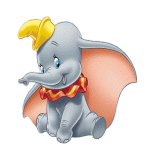threat
What information is contained in the call of a mammal? Some calls might reflect the internal emotional state of the animal, like fear or anxiety, or they can refer to an external object, agent, or event, like the presence of a predator. Rhesus monkeys, lemurs, baboons, and guinea pigs, for example, will produce calls when separated from their conspecifics or in the presence of a stranger. Howler monkeys produce specific alarm calls for avian predators, even when they have never encountered an avian predator for several generations. Vervet monkeys produce different calls in response to…
This is a repost from the old Wordpress incarnation of Not Exactly Rocket Science
You are being hunted, chased through a labyrinth by a relentless predator. Do you consider your options and plan the best possible escape, or do you switch off and rely solely on instinct? A new study provides the answer - you do both, flicking from one to the other depending on how far away the threat is.
Earlier studies have found that different parts of a rodent's brain are activated in the face of danger, depending on how imminent that danger is. Now, scientists at University College London has found the…
If you wanted to turn a rat into a fearless critter, unfazed by cats or bigger rats, the best way would be to neutralise a small pair of tiny structures in its brain called the dorsal premammillary nuclei, orPMD. According to new research by Simone Motta at the University of Sao Paolo, these small regions, nestled within a rat's hypothalamus, control its defensive instincts to both predators and other rats.
But not all neurons in the PMD are equal. It turns out that the structures are partitioned so that different bits respond to different threats. The front and side parts (the ventrolateral…
